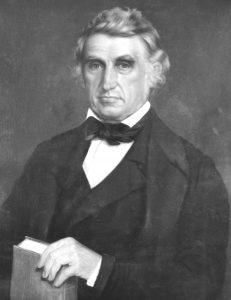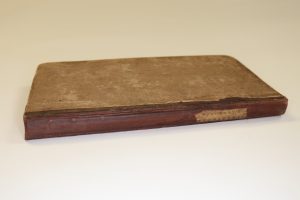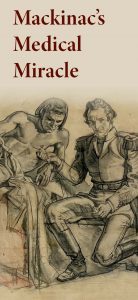

On June 6, 1822, a shot rang out inside the American Fur Company’s retail store located on Mackinac Island’s Market Street. When the smoke cleared, Alexis St. Martin, a young French Canadian voyageur, lay bleeding on the floor. Although the exact cause of the accident has been lost to history, the immediate results were abundantly clear: St. Martin was grievously wounded, with a large hole blasted into the left side of his abdomen and the interior of his stomach exposed. Although St. Martin was not expected to survive, store patrons sent word to fetch Dr. William Beaumont, the post surgeon at Fort Mackinac and the only physician on Mackinac Island. Arriving minutes after the accident, Beaumont made St. Martin comfortable but judged his wound to be mortal. The doctor had St. Martin carried to the post hospital in the fort. To Beaumont’s amazement, St. Martin survived, and under the doctor’s care began healing. Together, Beaumont and St. Martin embarked upon a journey of scientific discovery that continues to shape medical care today.


As St. Martin recovered from the accident, the wound slowly healed. However, instead of closing, the hole into his stomach fused to his abdominal muscles, creating a permanent opening. Beaumont realized this presented a unique opportunity to observe the digestive process inside a living person, and at the urging of the surgeon general of the army began making informal notes about what he could see inside St. Martin’s stomach as it worked to digest food. These initial observations occurred at Fort Mackinac in 1824, but grew into a series of formal experiments carried out periodically at other posts until 1833. By the time the final experiments concluded, Beaumont had gained a much clearer understanding of the human digestive process, publishing his findings as Experiments and Observations on the Gastric Juice and the Physiology of Digestion. Although other physicians and scientists had previously contributed to our understanding of how our stomachs work, St. Martin’s injury allowed Beaumont to make critical observations about the mechanical and chemical processes which occur during the digestive process.


To mark the 200th anniversary of the accident that set Beaumont and St. Martin on their path of discovery, a new gallery exhibit is being installed in the American Fur Company Retail Store. Opening on June 4, this new exhibit tells the story of the accident and subsequent research that transformed Beaumont into the “father of gastric physiology.” Admission to the new exhibit is included with tickets to Fort Mackinac and the Mackinac Island Native American Museum at the Biddle House. We hope you’ll join us soon to see this exciting new addition and learn more about Mackinac Island’s own contribution to medical science.








